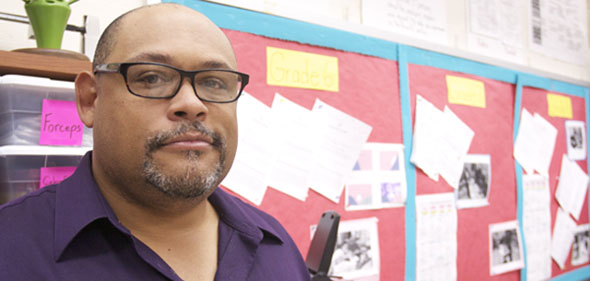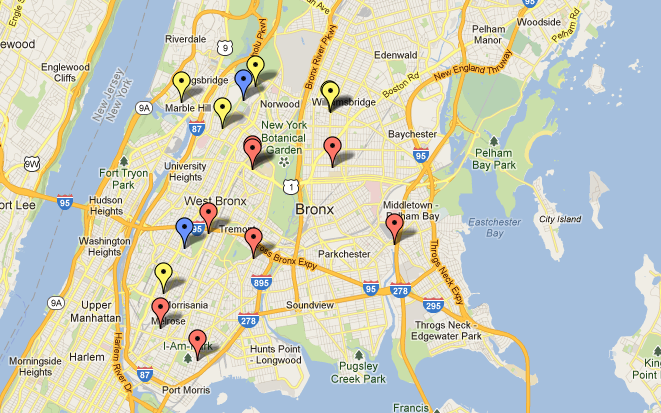
Five years ago, New York’s long-term suspension sites were little better than holding rooms for kids that public schools no longer wanted to deal with, kids who had committed offenses such as fighting, associating with gangs or possessing illegal drugs.
“We had kids sitting in a basement for 6, 7 months, locked in a class—I personally saw it—with no educational services at all,” said attorney Elisa Hyman, former executive director of Advocates for Children, a citywide legal group. “There were no appropriate teachers, there was no curriculum. The sites were dangerous places, where students were just warehoused.”
The attendance rates in the old centers averaged a paltry 32 percent, according to Superintendent Anthony Orzo, who now heads a system of 38 new suspension sites, reconfigured with support services in response to Advocates for Children’s class action law suit.
Officially dubbed “alternate learning centers,” these sites offer counseling and instruction by certified teachers. Orzo, a former Bronx principal, said approximately 11,000 students moved in and out of these centers during the 2010-2011 school year. If the sites are as good as Orzo says, they are one of the city school system’s best kept secrets.
The centers appear to be an improvement on the previous system, but critics remain skeptical, in part because the Department of Education refuses to allow outsiders to observe them. “They are moving in the right direction,” said Rebecca Shore, Advocates’ current director of litigation, “but we definitely still have concerns.”
The lawsuit, filed in 2002 by education advocacy group Advocates for Children, did not originally focus on conditions in the suspension sites. Its first goal was to ensure that disabled students with behavioral problems would not be excluded from educational services in any situation, said Hyman, who drafted the original lawsuit. However, once she began to hear about the experiences of several students with special needs who were suspended, Hyman decided to look in to suspension sites. She and her fellow attorneys were appalled at what they saw.
Advocates for Children then altered the lawsuit to address the lack of special-education services provided during long-term suspensions. Today, Shore said she is not yet satisfied that students with special needs receive appropriate services while serving long-term suspensions. In conjunction with the lawsuit, Advocates for Children brought on a special education expert to observe at the new suspension sites.
Orzo is proud of the new sites. He and his staff “created something from nothing,” as he puts it, coming up with the “alternate learning center” model, designed to provide both instruction and counseling. The DOE hired certified math, science, social studies, English and special education teachers to teach at the sites, as well as teaching assistants and school aides to provide support. These teachers use the same textbooks as New York City Public Schools, and follow the same yearly schedule. Classes are separated by grade, and there are sites for both middle school and high school students. There are eight sites in Manhattan serving a maximum of 80 students per site and 20 students per classroom.
“Each site functions as a small school,” said Alex Spencer, who acts as the Manhattan borough principal. But there are some differences. Suspension sites are not subject to grading like other New York City schools. Teachers at suspension sites are not eligible for performance bonuses. To placate concerned principals, suspended students have different arrival and dismissal times so they won’t interact with others in the school building.
But Orzo believes that the new suspension sites have a positive impact on students in trouble. He claims that the students often don’t want to return to their home school.
“The reason why I can’t keep them is because we only have so many seats,” he said. The average long-term suspension in New York City lasts 25 days, according to a 2011 report by the New York Civil Liberties Union, but some suspensions can last up to the length of an entire school year.
One middle-school suspension site is housed in the windowless ground floor of the Choir Academy in Harlem. On an April afternoon, Spencer sat behind his desk in the principal’s office, describing his work with both eloquence and charisma.
Like Orzo, Spencer had experience in the New York City public schools before he started working at the suspension sites. Also like Orzo, he had a sense of pride in the new sites. He was quick to mention field trips to the Manhattan’s Museum of Art and Design, digital photography courses, the Smart Boards in every classroom and the presence of Partnership for Children social workers at eleven sites. He also talked about a pilot program where volunteers called “transition coaches” are now helping formerly suspended students re-adjust at their home schools. But when asked about the challenges he and his employees face, Spencer sighed. There seemed to be too many to list.
“Every day is day one,” said Spencer. “There’s a new kid coming, a new kid going. You never really get comfortable, you never get into a groove.” Instructionally, “students don’t miss a beat,” he said. But when asked about the task of instructing a different group of students every day, he laughed and said, “it’s as easy as changing a tire on your car as you drive it down the road.”
Spencer calls the students he sees every day “the most vulnerable” kids in New York City. He has met students who have been labeled “the bad kid” since grade school, students who have been abused, students with probation officers and students who have had friends murdered by gangs.
“Kids don’t do stuff because they want to be difficult,” he said. “They have very good reason.”
Spencer also acknowledged that his teachers have undeniably hard jobs:
“If a kid is cursing at you or making an obscene gesture – if that’s like the nadir of your professional career, you really can’t be working here,” he said, “’cause everyday is going to be a bad day for you.” Teachers and counselors at suspension sites work with difficult students every day, but because the DOE prefers to keep these sites “under the radar,” even most New York City principals are unaware of the work they do.
“We have very hard working teachers, but they don’t really get the same kind of appreciation and respect and satisfaction,” said Spencer.
It is difficult to confirm any claims about the services offered to students serving long-term suspensions, since the DOE has barred access to classes in progress, or to students and parents who have experienced the new suspension sites. Marge Feinberg, a spokeswoman for the city school system cited a Federal act aimed at protecting student documents from the public as her justification for the barred doors.
An after-hours tour of Choir Academy’s empty classrooms showed that each was outfitted with textbooks, Smart Boards and a small grouping of desks. Student-made posters depicting plant and animal cells were hung on the walls of the science room, and a tall rack of sprouting plants loomed over the teacher’s desk as she sat preparing for the next day’s class. John Curtis, the assistant principal at Choir Academy’s suspension site, pointed out photos of students holding art projects they had completed at the Museum of Art and Design. In the hallway, three teachers aired their concerns about a student who was acting disengaged from class. But without any students occupying the desks or wandering the hallways, it was impossible to know what the atmosphere of Choir Academy’s Alternate Learning Center was really like during school hours.
Not only reporters, but also advocacy groups are banned from visiting the sites. Brandi McNeil of NYU’s Suspension Representation Project, which helps students and their parents during suspension hearings, said her impression is that students still fall behind in their original schools while at the new suspension centers, but she can’t be sure. She knew nothing about the services offered by the sites.
“They keep them on lockdown. It’s impossible for us to get a tour,” said McNeil who, like most advocates, believes students are better off when they are not excluded from their home schools.
“I think we’ve been very successful over the last five years in changing the perception of what happens while the child is on suspension,” said Spencer about parental attitudes. But when asked why so little information is released about suspension sites, he simply shrugged.
“I have no idea,” he said. “I think it’s the nature of what we do. I’m surprised we’re here having this conversation.”


